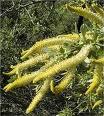Caudate Willow Tree Information
Images of Caudate Willow:






Caudate Willow grows in the following 17 states and provinces:
Alaska, Alberta, British Columbia, California, Colorado, Idaho, Montana, Nevada, New Mexico, North Dakota, Oregon, Saskatchewan, South Dakota, Utah, Washington, Wyoming, YukonInformation about Caudate Willow:
The Salix Lasiandra is commonly known as the Black Willow, Caudate Willow, Golden Willow, Pacific Willow, Red Willow, Western Black Willow, Whiplash Willow as well as Yellow Willow.
The currently accepted scientific name of Pacific willow is Salix lucida Muhlenb. subsp. lasiandra (Benth.) E. Murray . LIFE FORM : Tree FEDERAL LEGAL STATUS : No special status OTHER STATUS : NO-ENTRYPacific willow is distributed from the interior of Alaska and the Yukon Territory southeast to Saskatchewan and the Black Hills, southward along the coast to southern California, and south through the Rocky Mountains to New Mexico . It is mostly absent from the dry interior country of eastern Washington, Oregon, southern Idaho, Nevada, and Utah .Pacific willow typically occurs in early seral communities along river banks or on moist alluvium . In the Rocky Mountains these riparian communities are often adjacent to zones of big sagebrush (Artemisia tridentata), Douglas-fir (Pseudotsuga menziesii), or ponderosa pine (Pinus ponderosa) . In California it occurs in riparian forests as a codominant with red alder (Alnus rubra), black cottonwood, and Oregon ash (Fraxinus latifolia) . Published classification schemes listing Pacific willow as an indicator or dominant in community types (cts), habitat types (hts), riparian site types (rst), or dominance types (dts) are presented below: Area Classification Authority sw US Riparian hts Szaro & Patton 1987 sw MT Riparian veg. rst,hts,cts Hansen & others 1988 MT Riparian veg. dts Hansen & others 1988Some of the information provided here is attributed to:Uchytil, Ronald J. 1989. Salix lucida subsp. lasiandra. In: Fire Effects Information System, [Online]. U.S. Department of Agriculture, Forest Service, Rocky Mountain Research Station, Fire Sciences Laboratory (Producer). , available at the USDA Fire Effects Information System (FEIS) website